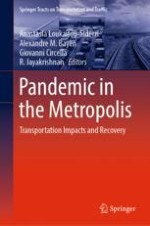2023 | OriginalPaper | Buchkapitel
Can I Borrow [for] Your Car? Income, Race, and Automobile Debt in California
verfasst von : Evelyn Blumenberg, Fariba Siddiq, Samuel Speroni, Jacob L. Wasserman
Erschienen in: Pandemic in the Metropolis
Aktivieren Sie unsere intelligente Suche, um passende Fachinhalte oder Patente zu finden.
Wählen Sie Textabschnitte aus um mit Künstlicher Intelligenz passenden Patente zu finden. powered by
Markieren Sie Textabschnitte, um KI-gestützt weitere passende Inhalte zu finden. powered by
